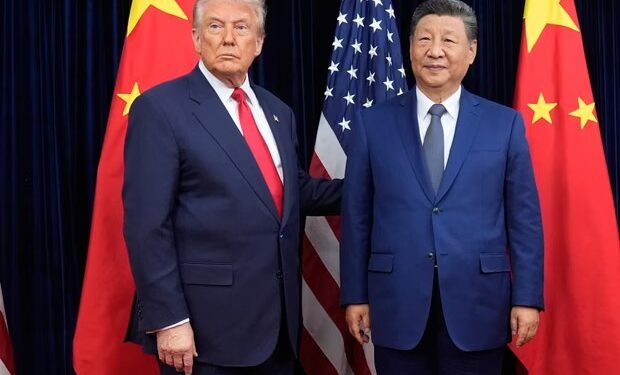In a high-stakes meeting in Busan, South Korea, former US president Donald Trump and China’s leader Xi Jinping announced a one-year agreement aimed at reducing trade tensions and stabilising global supply chains. The deal includes a suspension of China’s planned export controls on rare earth minerals and a US commitment to lower tariffs on Chinese goods.
Rare earths and tariffs at the centre
The two-hour meeting, described by Trump as “a 12 out of 10,” produced an arrangement that many observers see as a tentative truce in the long-running trade conflict. China agreed to lift its threat of restricting rare earth exports—crucial for electronics, green technologies, and defence systems—while the US will cut import tariffs on Chinese goods from roughly 57 to 47 per cent.
The United States also pledged to halve certain tariffs on products linked to fentanyl precursors, while Beijing agreed to intensify cooperation to curb illegal chemical exports. Both sides confirmed that Chinese firms will resume large-scale purchases of American soybeans and agricultural goods, a move seen as symbolic of renewed dialogue.
Economic and geopolitical context
Rare earth minerals have become a strategic flashpoint between Washington and Beijing, as China dominates more than 70 per cent of global supply and processing capacity. Any restriction would threaten production of semiconductors, electric vehicles, and military systems worldwide. By securing a temporary easing, the US aims to protect industries dependent on critical materials.
For Xi, the agreement allows China to demonstrate pragmatic leadership amid slowing domestic growth, while Trump can present it as a diplomatic success during a period of heightened geopolitical tension. Still, analysts note that the suspension lasts only a year and could be reversed if talks falter.
Market and diplomatic reaction
Global markets reacted cautiously. Asian equities opened mixed on Thursday as investors waited for more details, with modest gains in Hong Kong offset by losses in Tokyo and Shanghai. The news briefly strengthened the yuan and supported US futures before retreating as traders questioned the durability of the accord.
European and American analysts alike see the meeting as more symbolic than structural—an attempt to cool relations without addressing core issues such as advanced chip exports, Taiwan, or security technology. The absence of a formal enforcement mechanism adds uncertainty over how effectively the commitments will be upheld.
A fragile peace in global trade
While the agreement signals an important easing in tone, it also highlights how fragile the relationship remains. The one-year window for cooperation could pave the way for more comprehensive negotiations—or set the stage for renewed confrontation if either side backtracks. For now, markets and policymakers alike appear content to breathe a cautious sigh of relief.
Newshub Editorial in Asia – 30 October 2025



Recent Comments